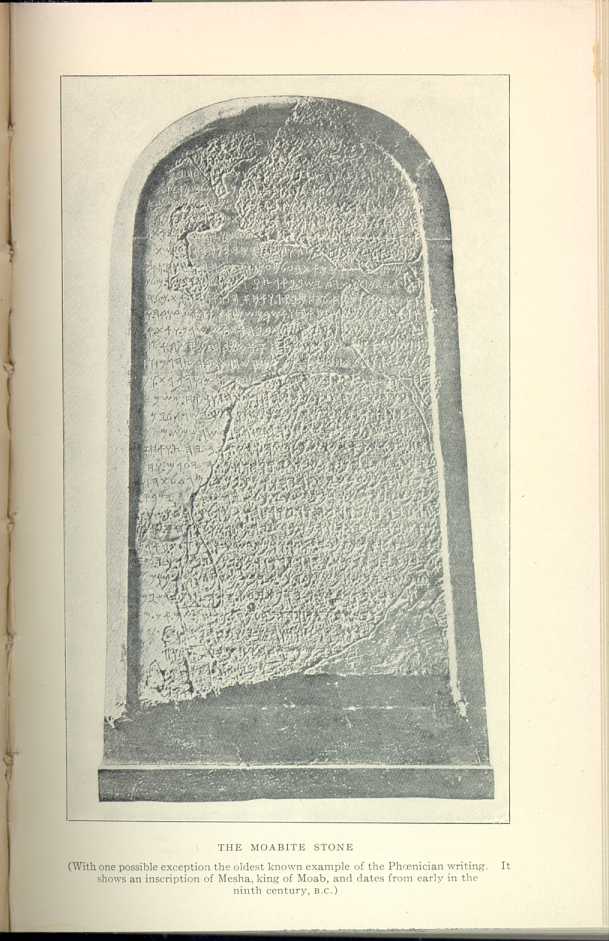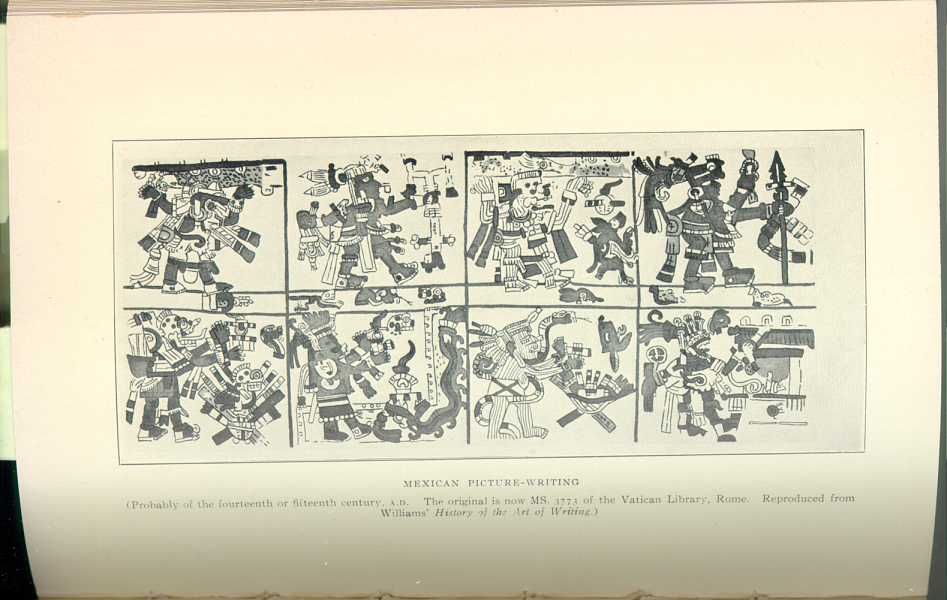| IV THE DEVELOPMENT OF THE ALPHABET A History of Science: in Five Volumes. Volume I: The Beginnings of Science | ||
[The Development of the Alphabet]
BEFORE we turn specifically to the new world of the west, it remains to take note of what may perhaps be regarded as the very greatest achievement of ancient science. This was the analysis of speech sounds, and the resulting development of a system of alphabetical writing. To comprehend the series of scientific inductions which led to this result, we must go back in imagination and trace briefly the development of the methods of recording thought by means of graphic symbols. In other words, we must trace the evolution of the art of writing. In doing so we cannot hold to national lines as we have done in the preceding two chapters, though the efforts of the two great scientific nations just considered will enter prominently into the story.
The familiar Greek legend assures us that a Phœnician named Kadmus was the first to bring a knowledge of letters into Europe. An elaboration of the story, current throughout classical times, offered the further explanation that the Phœnicians had in turn acquired the art of writing from the Egyptians or Babylonians. Knowledge as to the true origin and development of the art of writing did not extend in antiquity beyond such vagaries as these. Nineteenth-century studies gave the first real clews to an

THE MOABITE STONE
(With one possible exception the oldest known example of the
Phœnician writing. It shows an inscription of Mesha,
king of Moab, and dates from early in the ninth century, B.C.)
[Description:
Photograph of the Moabite Stone, an inscription of Mesha, king
of Moab, dating from the ninth century, B.C.)
]
But, as has often happened in other fields after years of acrimonious controversy, a new discovery or two may suffice to show that neither contestant was right. After the Egyptologists of the school of De Rouge [36] thought they had demonstrated that the familiar symbols of the Phœnician alphabet had been copied from that modified form of Egyptian hieroglyphics known as the hieratic writing, the Assyriologists came forward to prove that certain characters of the Babylonian syllabary also show a likeness to the alphabetical characters that seemingly could not be due to chance. And then, when a settlement of the dispute seemed almost hopeless, it was shown through the Egyptian excavations that characters even more closely resembling those in dispute had been in use all about the shores of the Mediterranean, quite independently of either Egyptian or Assyrian writings, from periods so ancient as to be virtually prehistoric.
Coupled with this disconcerting discovery are the revelations brought to light by the excavations at the sites of Knossos and other long-buried cities of the island of Crete. [37] These excavations, which are still in progress, show that the art of writing was known and practised independently in Crete before that cataclysmic overthrow of the early Greek civilization which archæologists are accustomed to ascribe to the hypothetical invasion of the Dorians. The significance of this is that the art of writing was known in Europe long before the advent of the mythical Kadmus. But since the early Cretan scripts are not to be identified with the scripts used in Greece in historical times, whereas the latter are undoubtedly of lineal descent from the Phœnician alphabet, the validity of the Kadmus legend, in a modified form, must still be admitted.
As has just been suggested, the new knowledge, particularly that which related to the great antiquity of characters similar to the Phœnician alphabetical signs, is somewhat disconcerting. Its general trend, however, is quite in the same direction with most of the new archæological knowledge of recent decades—that is to say, it tends to emphasize the idea that human civilization in most of its important elaborations is vastly older than has hitherto been supposed. It may be added, however, that no definite clews are as yet available that enable us to fix even an approximate date for the origin of the Phœnician alphabet. The signs, to which reference has been made, may well have been in existence for thousands of years, utilized merely as property marks, symbols for counting

MEXICAN PICTURE-WRITING
(Probably of the fourteenth or fifteenth century, A.D. The
original is now M.S. 3773 of the Vatican Library, Rome.
Reproduced from Williams' History of the Art of Writing.)
[Description:
Eight panels (four above four) of various typically pre-Columbian
art.
]
| IV THE DEVELOPMENT OF THE ALPHABET A History of Science: in Five Volumes. Volume I: The Beginnings of Science | ||